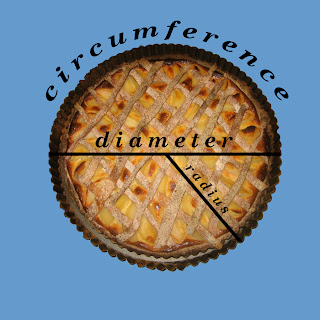Thank you for stopping by today! I hope you've been following and enjoying this blog tour as much as I have! I want to thank Amy Shelton and Donna Hulka of Crochetville for hosting this tour and having me be part of it, and also I give thanks to CGOA. Both organizations have been an essential part of my life as a crocheter, and as a burgeoning crocheter professional.
 |
| Reunited at Professional Development Day |
I'm a fairly new crochet designer who loves to work with size 20 thread in all sorts of colors. Two of my designs are scheduled to be published this June, one of which is Split Infinitive which placed 2nd in the Artistic Expressions category at the 2011 CGOA Design Competition.
I'd like to share two things with you today:
First, the debut of Basanti, my new mehndi (henna tattoo art) inspired barefoot sandal design and pattern! It's my second mehndi inspired design of which I plan to create more. When spring arrives--which I'm hoping is soon--Basanti will be the perfect foot accessory to wear! The pattern is available at my Ravelry store.
 |
| New Design: Basanti Barefoot Sandal |
Second, as the post title states: translating a spirograph into crochet.
Before I got started in designing I crocheted lots and lots of doilies. About three years ago a friend mentioned that the doilies I crocheted looked like mandalas. Something clicked in my head and I began looking at images of circular forms of art ranging from mandalas, folk art, mehndi, painted plates and spirographs.
What's a Spirograph?
If you are of a particular age group or into low-tech toys you are probably aware of a toy called Spirograph™. I remembering not being very talented with using it.
What I didn't know about spirographs until many years later was that there is hidden math to the designs. The technical terms for most spirograph designs are hypotrochoid and epitrochoid.
 |
| Hidden math of the spirograph |
Something Gets Lost in Translation
The mathematical expressions for the spirograph seem pretty daunting:
x(t)=(R+r)cos(t) + p*cos((R+r)t/r)
y(t)=(R+r)sin(t) + p*sin((R+r)t/r)
How can that be translated into crochet? That's a trick question because all that is needed to translate the spirograph into crochet is the basic math for a crocheted circle. (Of course there's a bit more to it as you'll see when the pattern is published this June.) All of that math gets lost in the translation to crochet because it's not needed to create the appearance of a spirograph. y(t)=(R+r)sin(t) + p*sin((R+r)t/r)
You might remember on PBS the show The Joy of Painting hosted by artist Bob Ross. (Happy clouds!) I was amazed how he could paint an image with what appeared to be nonsensical and haphazard brush strokes. My artistic perception was awakened by his use of illusion. I saw images and art in a whole new way. Eventually my artistic perception and knowledge of crochet coalesced and Split Infinitive was the result!
Play with Online Spirographs & Get Inspired!
Now that you know there isn't any complicated math to crocheting a spirograph, see if you might find some inspiration in creating some spirographs from these online tools:
Now that you know there isn't any complicated math to crocheting a spirograph, see if you might find some inspiration in creating some spirographs from these online tools:
The Tour Continues
| March 29 | Amy Shelton | Donna Hulka |
| March 30 | Linda Dean | Kristin Dragos |
| March 31 | Karen C K Ballard | Gwen Blakley-Kinsler |




